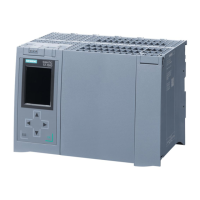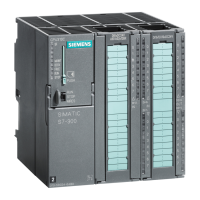Using PID_Temp
6.5 Multi-zone controlling with PID_Temp
PID control
Function Manual, 03/2017, A5E35300227-AC
199
Multi-zone controlling with PID_Temp
Introduction
In a multi-zone control system, several sections, so-called zones, of a plant are controlled
simultaneously to different temperatures. A multi-zone control system is characterized by the
mutual influence of the temperature zones through thermal coupling, i.e. the process value of
one zone can influence the process value of a different zone through thermal coupling. The
strength that this influence has depends on the structure of the plant and the selected
operating points of the zones.
Example: Extrusion plant as it is used, for example, in plastics processing.
The substance mixture that passes through the extruder has to be controlled to different
temperatures for optimal processing. For example, different temperatures can be required at
the filling point of the extruder than at the outlet nozzle. The individual temperature zones
mutually influence each other through thermal coupling.
When PID_Temp is used in multi-zone control systems, each temperature zone is controlled
by a separate PID_Temp instance.
Observe the following explanations if you want to use the PID_Temp in a multi-zone control
system.
Separate pretuning for heating and cooling
Initial commissioning of a plant as a rule begins with the carrying out of pretuning in order to
carry out initial setting of the PID parameters and control to the operating point. The
pretuning for multi-zone control systems is often carried out simultaneously for all zones.
PID_Temp offers the possibility of carrying out pretuning for heating and cooling in one step
(Mode = 1, Heat.EnableTuning = TRUE, Cool.EnableTuning = TRUE) for controllers with
activated cooling and PID parameter switching as the method for heating/cooling
(Config.ActivateCooling = TRUE, Config.AdvancedCooling = TRUE).
However, it is advisable not to use this tuning for simultaneous pretuning of several
PID_Temp instances in a multi-zone control system. Instead, first carry out the pretuning for
heating (Mode = 1, Heat.EnableTuning = TRUE, Cool.EnableTuning = FALSE) and the
pretuning for cooling (Mode = 1, Heat.EnableTuning = FALSE, Cool.EnableTuning = TRUE)
separately.
Pretuning for cooling should not be started until all zones have completed pretuning for
heating and have reached their operating points.
This reduces mutual influencing through thermal coupling between the zones during tuning.
If PID_Temp is used in a multi-zone control system with strong thermal couplings between
the zones, you should ensure that the adaption of the delay time is deactivated for pretuning
with PIDSelfTune.SUT.AdaptDelayTime = 0. Otherwise, the determination of the delay time
can be incorrect if the cooling of a zone is prevented by the thermal influence of other zones
during the adapting of the delay time (heating is deactivated in this phase).

